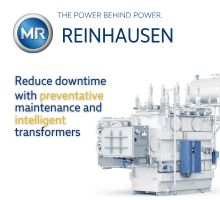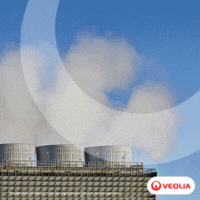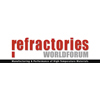Posco Sets New Record for Mega Blast Furnace Restart
08/06/2009 - Posco’s No. 4 Blast Furnace in Gwangyang works resumed to its normal operation capacity within the first three days of operation, a significant accomplishment for a large blast furnace of over 5500 m3.
Posco’s No. 4 Blast Furnace in Gwangyang works resumed to its normal operation capacity within the first three days of operation.
Posco recorded a discharge quantity of 11,193 tonnes/day in the early morning of the 24th, exceeding the furnace’s normal discharge rate just three days after operations were initiated on the 21st. The quick startup is a significant accomplishment for a large blast furnace of over 5500 m3.
Gwangyang Works’ No. 4 Blast Furnace has opened a new era of mega-sized (more than 5500 m3) blast furnaces for Posco, which has been in operation for some 36 years. Ranked 5th in the world in terms of size, the Gwangyang Works’ No. 4 Blast Furnace is generally recognized as one of the world’s most efficient blast furnaces, with an annual production capacity of 5 million tonnes.
Posco credits thorough preparation and advanced research for its ability to ramp up to full production within such a short time period as compared to other large blast furnaces, which have taken over one week on average to achieve normal operation capacity.
Gwangyang’s Iron-Making Department hosted a workshop where case studies were presented on facility accidents and faulty operations after startup of large blast furnaces. Through the workshop, the Gwangyang Iron-Making Department was able to establish 59 countermeasures in advance and designate responsible parties for execution prior to startup of No. 4 Blast Furnace.
For quality assurance of the test operation, parties responsible for test repair, operation, and maintenance were identified by name, thereby enhancing a sense of responsibility and accountability. Thorough verifications on temperature control of the furnace, as well as the distribution of input material — considered to be the most important control parameters after initializing — were also conducted in advance.
Posco also conducted an advanced study on technological developments in preparation for the discharging operation, which also helped to bring about marked improvements. Continued training of engineers and thorough test operations enabled them to respond to various operational patterns.
Posco said that in the future, it will continue to thoroughly analyze the operation of Gwangyang Works’ No. 4 Blast Furnace. Posco said it would also focus on the achievement of high discharge rate operations by considering the sintering process and stable cokes supply.
Posco said it would also continue its efforts to improve future competitiveness through continued technological development for high discharging rate, low reducing agent ratio, and usage of cost-effective material and fuels, helping it to maintain its leadership in ironmaking technology.
Posco recorded a discharge quantity of 11,193 tonnes/day in the early morning of the 24th, exceeding the furnace’s normal discharge rate just three days after operations were initiated on the 21st. The quick startup is a significant accomplishment for a large blast furnace of over 5500 m3.
Gwangyang Works’ No. 4 Blast Furnace has opened a new era of mega-sized (more than 5500 m3) blast furnaces for Posco, which has been in operation for some 36 years. Ranked 5th in the world in terms of size, the Gwangyang Works’ No. 4 Blast Furnace is generally recognized as one of the world’s most efficient blast furnaces, with an annual production capacity of 5 million tonnes.
Posco credits thorough preparation and advanced research for its ability to ramp up to full production within such a short time period as compared to other large blast furnaces, which have taken over one week on average to achieve normal operation capacity.
Gwangyang’s Iron-Making Department hosted a workshop where case studies were presented on facility accidents and faulty operations after startup of large blast furnaces. Through the workshop, the Gwangyang Iron-Making Department was able to establish 59 countermeasures in advance and designate responsible parties for execution prior to startup of No. 4 Blast Furnace.
For quality assurance of the test operation, parties responsible for test repair, operation, and maintenance were identified by name, thereby enhancing a sense of responsibility and accountability. Thorough verifications on temperature control of the furnace, as well as the distribution of input material — considered to be the most important control parameters after initializing — were also conducted in advance.
Posco also conducted an advanced study on technological developments in preparation for the discharging operation, which also helped to bring about marked improvements. Continued training of engineers and thorough test operations enabled them to respond to various operational patterns.
Posco said that in the future, it will continue to thoroughly analyze the operation of Gwangyang Works’ No. 4 Blast Furnace. Posco said it would also focus on the achievement of high discharge rate operations by considering the sintering process and stable cokes supply.
Posco said it would also continue its efforts to improve future competitiveness through continued technological development for high discharging rate, low reducing agent ratio, and usage of cost-effective material and fuels, helping it to maintain its leadership in ironmaking technology.



-(1)-Reinhausen-(1).jpg?lang=en-US&ext=.jpg)






